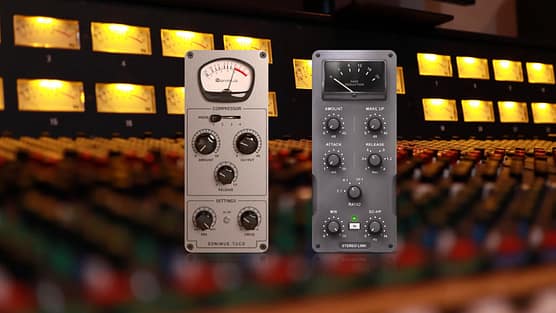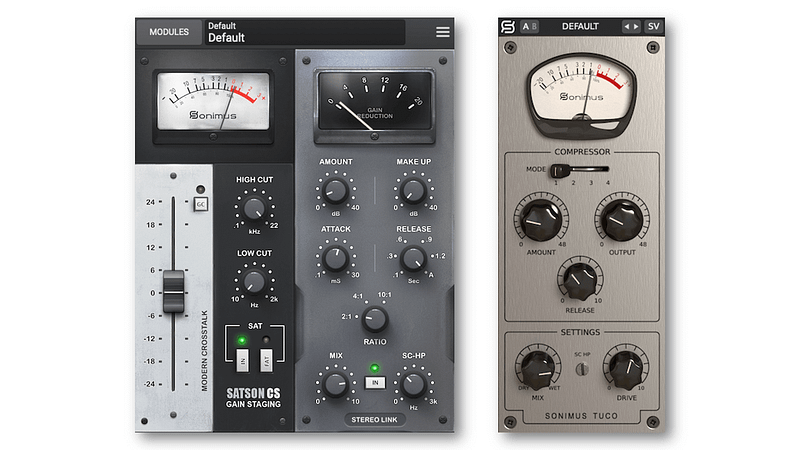
Sonimus, renowned for its high-quality analogue-modeled plugins, offers several versatile tools for mastering bus compression.
But before diving into specific settings and configurations, let’s look at why Master Bus Compression is such a crucial step in any mix.
Understanding Master Bus Compression
While a compressor’s primary goal is to control the dynamic of source material, Master Bus compression goes beyond this, imparting a sense of togetherness to any production. The idea behind it is to bind the individual tracks, creating a unified sound while making the mix consistent and controlled. On top of that, depending on the type of compressor used for the job, the master compressor can shape the tone of our track, applying subtle coloration or enhancements to the overall mix.
Settings and Techniques
There are several ways of approaching master bus compression, but two of the most common configurations would be the “glue compression” and the “tape compression”.
In both cases, the ratio is set to 1.5:1 or 2:1 depending on the compressor availability with moderate attack times (10-30ms) to retain transients while avoiding distortion. Regarding the release time, we should match the tempo and dynamics of the track. Values between 300 and 600 msec are usually a good starting point.

Sonimus Plugins for Master Bus Compression
Sonimus plugins offer two very different compressors that work exceptionally well as Master Bus compressors with their characteristic sound: TuCo and the Satson CS compressor module.
TuCo embodies the characteristics of vari-mu compressors, famed for their warm, musical compression. With controls for gain reduction (Amount), Release Time, and Mix, TuCo allows gentle yet effective compression suited for the master bus. Start with moderate settings, such as a medium attack (around 30-40ms) and release (300-400ms), and adjust the amount to maintain a balanced mix. The drive knob in TuCo is the icing on the cake, adding saturation and personality to any production.
Satson CS provides a G-bus-style compressor in a modular rack. It is inspired by one of the most renowned bus compressors in the industry, with extra features that make it an excellent choice for a master bus compressor. Its HP side-chain filter is beneficial to make sure the low end of the track doesn’t over-trigger the compressor.
Both compressors present a mix knob in their controls, allowing them to blend the compressed and uncompressed signals for a more transparent effect.
Not all about compression
While they are not dedicated compressors, Sonimus’s range of console emulations, like N-Console or A-Console, offer subtle saturation and harmonics that can help to add cohesion to any mix. Inserting them before applying additional compression can add analogue warmth, enhancing the overall mix character.
Another great tool is Sonimus SonEQ Pro. While being an EQ plugin, SonEQ Pro’s output transformer and saturation controls can subtly shape the mix’s tone before applying compression. Use it in conjunction with other Sonimus compressors to add depth and character.
Master bus compression demands a delicate balance between enhancing the mix and preserving its original essence. Sonimus plugins, renowned for their analogue warmth and musicality, are powerful tools in sculpting the sonic landscape of your music. These settings and techniques are starting points to help you get your mixes to the next level. Experiment, listen, refine, and let your creativity flow to achieve the desired sonic experience in your music production journey!
Don’t forget to subscribe to Sonimus’ newsletter or follow us on social media to get the latest tricks and news for using Sonimus plugins.








Leave A Comment
You must be logged in to post a comment.